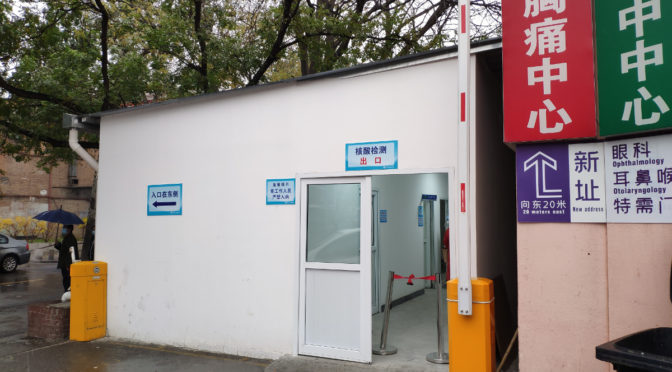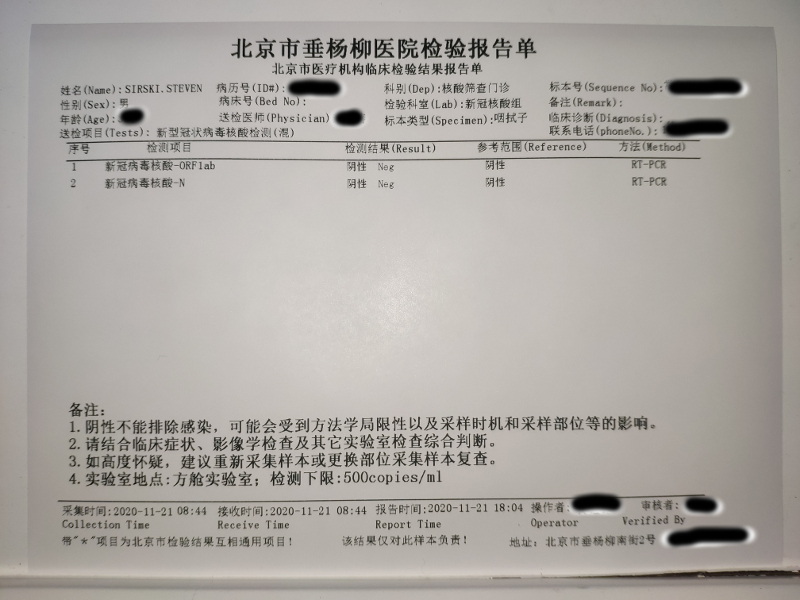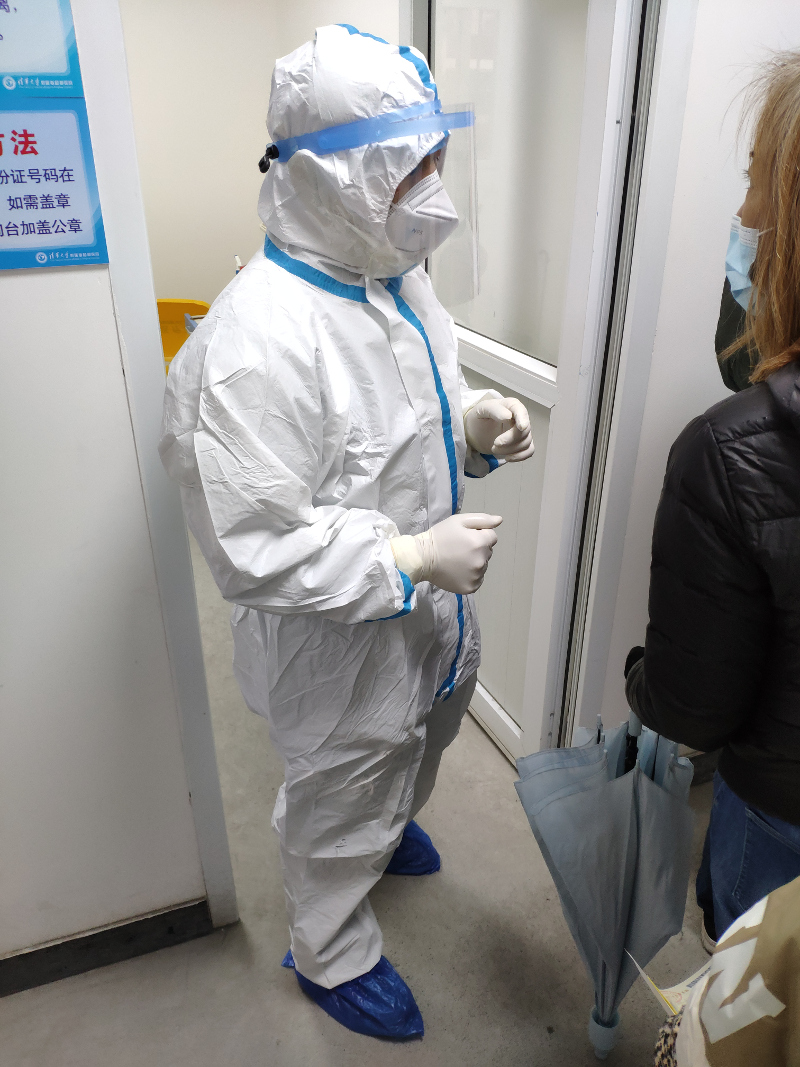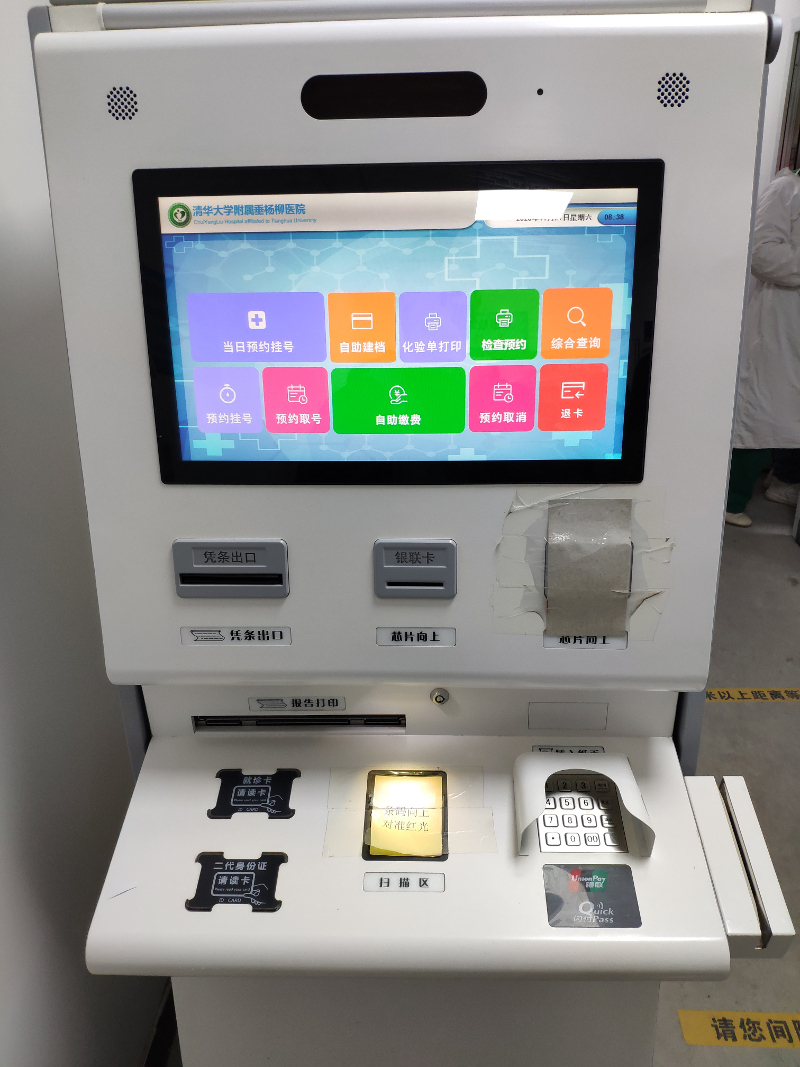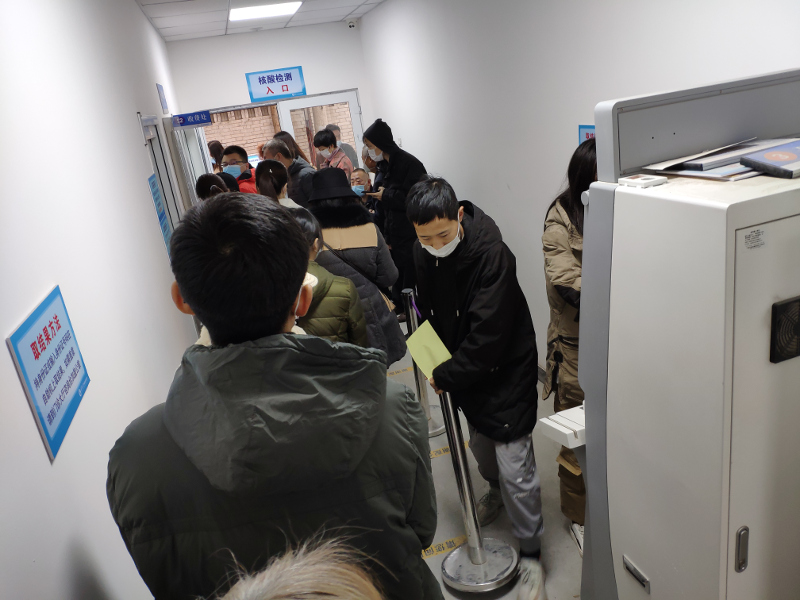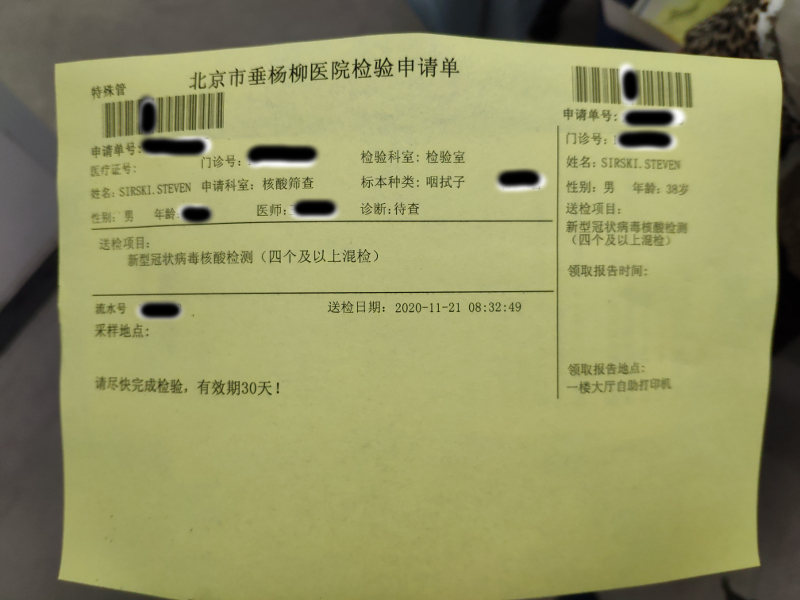It might come as a surprise to some but not to others, and some might even censure me for not doing this sooner, but I finally took a COVID test, also known as a nucleic acid test, or NAT for short. The result?
Negative.
Why did I finally go in for a test?
Work told us to.
In order to get into some of the campuses that we work in we need to have recent tests done within the last seven days or so. Not only do we have to file that test with our company, but we have to bring that exact same piece of paper to the campus the day we want to get in. This test is in addition to the other “contact tracing” APPs that we must fill in on a daily basis and, if we don’t, we get emails or phone calls from our line managers. These include several company-required health forms and a general, nation-wide tracker that is based on our cell phone’s GPS.
So what was the NAT test like?
There were several places I could go for the test, some spoke English but many don’t. The hospital I went to, a so-called “local” hospital, was closer to my place but English wasn’t widely available. The doctor who was administering the test spoke a little bit of English but the nurses didn’t.
In retrospect the process was easy and straight forward enough that, had my Chinese been any better, I think I would have been a lot less confused. I would have also known the necessary sequence of events in order to get the test done.
Finding the NAT centre was easy enough as it was a separate, make-shift building joined to the hospital itself. The nurses were wearing protective gear, including masks, gloves and face shields, but weren’t as dressed up as the doctor administering the test who was wearing a full HAZMAT suit.
The test centre was surprisingly busy with about 50 or so people in or around the building wanting to get a test done. It was a bit of a mess as the electronic registration kiosk was inside the test centre and occupied half of the walkway which meant people had to maneuver around it and the others in line. One metre distance? Not quite.
To get into the building I had to scan a QR code with WeChat and fill in some information, basically informing them of my whereabouts for the last two weeks and where I was living in Beijing. With the help of Baidu Translate I was able to make my way through the form easy enough. I suppose this was an initial screen to make sure I hadn’t been in any high risk areas or that I don’t live in a high risk area… which makes me wonder why anyone would tell the truth if they had actually been there.
I received my first slip of paper that indicated admittance to the testing area. But this was when I was told I needed a registration number, a da ting hao or something to that effect, for which I had to go inside the actual hospital to get. What she was really asking me was if I had already gone inside the hospital to the 大厅 (da ting, big hall) and registered. What I needed was a bar code that could be scanned by the electronic kiosk for processing.
This is where my confusion occurred since I didn’t understand why I needed to register in order to get a test that was being done outside of the hospital itself. Wouldn’t it be safer to keep everything outside?
If I had a Chinese residence card, a shen qian, things would’ve been a bit easier as I could have then use the electronic kiosks outside of the hospital. But, since I had my passport which can’t be scanned by the machines, I had to go inside and speak to a nurse. She filled out some information on her computer and gave me the necessary bar code.
Back to the testing centre the nurse instructed me to scan the bar code at the kiosk, after which she punched through some buttons that popped up before asking how I was going to pay: WeChat or Alipay? Alipay, I say. She presses another button I scan a QR code, enter my password, and it’s all done. Seventy kuai total, or about $14 CAD.
Receipt in hand I stand in the line that is facing the door through which I entered. I don’t understand why I’m in this line but a lot of other people are already lined up so I figure they can’t be wrong.
Turns out this was the payment line if I needed a fapiao (a type of official receipt with a red stamp on it). The actual testing line was behind me.
A nurse appeared with a stack of yellow papers in her hands and started calling out names. She comes across a “外国人” (waiguoren, foreigner) paper and asks who it belongs to. The other nurse points to me in line.
I’m given this new piece of yellow paper that has my name on it and I’m told to 检查 (jian cha, check) that everything is correct. It looks alright to me.
Then I’m told to move into another line which leads into the same room from which the nurse with the yellow papers came from. There’s already a line up of people out the door and there seems to be a bit of delay. The nurse comes back out and hollers down the hallway to the other nurse, something about the 系统 (xi tong, operating system) which, I can only imagine is Windows and, more then likely, is encountering some sort of error.
All the while I’m waiting in this line I get to observe the next room over which is where the HAZMAT suit-wearing doctor is located. He’s standing in front of a desk with a tray full of red-capped viles. If I had to take a guess, I’d say that this was where the tests were taking place. Up until then I had only heard about what it feels like to go through a NAT test, but I’d never actually seen one before.
And sure enough, once people started exiting the room I was waiting to get into, they entered this doctor’s office, gave him their little vile, sat down and pulled down their masks. The doctor opened a set of swabs from their sterile packaging and then, telling the patient to open their mouth, shoved the swabs down the patient’s throat and started scrubbing around. If this were to be a marketing campaign for the NAT test I’m sure people would rather take their chances with the virus rather than go through what I saw taking place. The way these people gagged, choked, and hocked when the doctor was swabbing the inside of their mouth made you think they were about to vomit all over the place. I wondered how many people had actually vomited while taking this NAT test.
Finally I got into the room and, as it turns out, the same lady who was doling out the yellow papers in the hallway was now behind the desk taking those same papers back and stamping them, before giving each person their own red-capped vile in which you could see some sort of reddish liquid sloshing around. This time, however, she kept the yellow paper.
Vile in hand, it was my turn to queue for the NAT test itself.
I’m not sure if it was because I was the only foreigner or if maybe the others were exaggerating their discomfort, but it seems that the doctor took it easy on me. I was expecting to gag and nearly vomit like the others I’d witnessed moments before but, when all was said and done, it wasn’t that bad.
My process was the same as the others: I handed him the vile, sat down, pulled down my mask and waited for instructions. “Open,” he said and in went the swabs to the very back of my tongue and the swabbing began. I expected him to hit my tonsils but he never did. Two seconds later he says, “Finished”.
That’s it? That’s what these people were gagging over? Was I really that lucky or was I just more tolerant to the discomfort? And no, don’t read it any other way than that.
I won’t be too confident in my treatment this time since I know that each hospital visit can be hit or miss, especially when you go to one of these “local” hospitals. And this won’t be the last time I come here. We will be required to take a NAT test for every campus we enter and each test must be recent which means this could be a weekly event for me for the next little while.
I can tell you one thing, however, I am getting tired of wearing a mask. We’re required to wear them for work at all times and while out in public. The only benefit of the masks right now is that it is getting cold outside and the wind is picking up so they do help in keeping my face warm.
And so that was my experience getting a nucleic acid test. Not horrible, but I’m not sure what the next time will be like.
